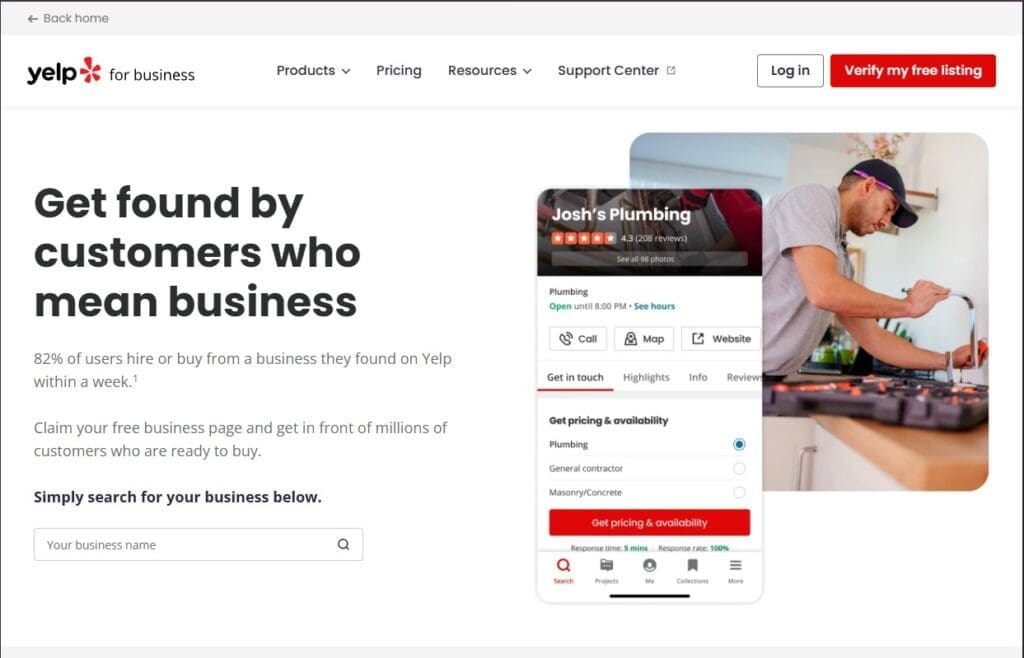SEO Tips for Local Home Service Businesses
How to Get Found (and Chosen) by Customers in Your Area
When someone needs a plumber, electrician, HVAC repair, or landscaper, they’re not flipping through the Yellow Pages anymore, they’re pulling out their phone and typing “plumber near me” or asking their smart speaker who’s available. If your home service business doesn’t show up in those search results, you’re missing out on real customers who are ready to buy.
Search engine optimization (SEO) might sound complicated, but it’s really just about helping search engines understand what you do, where you do it, and why you’re the best choice for the job. With a few smart local SEO strategies, you can improve your visibility in your service area and even start showing up in AI-powered search results.
Let’s break down some practical ways to make that happen.
1. Start With Your Google Business Profile
Your Google Business Profile (GBP) is one of the most powerful free tools available to local businesses. When someone searches for your services in your area, this profile is what helps you appear in the local “map pack”. That’s the term for the top three business listings that show up alongside a map in search results.
To make the most of it:
- Claim and verify your profile. Go to business.google.com and follow the steps to verify your listing.
- Keep your information accurate. Double-check your name, address, and phone number (often called NAP). Consistency across all platforms builds trust with Google.
- Choose the right categories. Pick the most specific business category that matches your main service (like “HVAC Contractor” instead of just “Contractor”).
- Add photos and updates. Post regularly with things like completed projects, before-and-after shots, team photos, and seasonal tips all help keep your listing active and engaging.
- Encourage reviews. Respond to every review, positive or negative. Google rewards businesses that interact with their customers.
Pro tip: Google’s local algorithm gives a lot of weight to proximity, relevance, and prominence, so even small actions like updating hours, posting new photos, or responding to reviews can improve your visibility.

2. Optimize Your Website for Local Search
Once your Google Business Profile is dialed in, your website should reinforce that same local information. Think of it like this: Google uses your website to confirm the details on your business profile. The more consistent and detailed you are, the more confident Google is about showing your business to local customers.
Here’s what to focus on:
- Use local keywords naturally. Phrases like “plumbing repair in Norfolk, VA” or “air conditioning installation near Richmond” should appear in your headings, service pages, and meta descriptions.
- Create a service area page. If you serve multiple nearby cities, dedicate a page for each main area.
- Include your NAP in your footer. Make sure your business name, address, and phone number appear on every page.
- Add location-specific content. Blog posts about seasonal maintenance tips or local projects help show Google (and customers) that you’re active in the community.
If web development isn’t your strong suit, this might be where you bring in someone with SEO experience. They can help you with technical pieces like schema markup (the code that helps Google understand your business details), internal linking, and site speed, all of which impact how high you show up in search results.
3. Build Local Citations and Backlinks
A citation is any online mention of your business name, address, and phone number. For example, online directories or local business listings. The more consistent citations you have, the more Google trusts that your business is legitimate.

Start with the big ones like:
- Google Business Profile
- Yelp
- Angi (formerly Angie’s List)
- Nextdoor
- Better Business Bureau
- Local Chamber of Commerce
Then look for industry-specific directories (like HomeAdvisor or Thumbtack) or regional business directories.
On top of citations, backlinks, links from other reputable websites to yours, also boost your authority. You can earn these by:
- Partnering with local charities or events and getting mentioned on their websites.
- Writing guest posts for local blogs.
- Getting featured in local news stories or homeowner magazines.
These small wins can add up to big SEO results.
Want to stay up to date with the news and resources from EdwardsSchoen?
Sign up for our monthly newsletter to stay in the know!
4. Create Content That Builds Trust
In the home service industry, your website isn’t just about ranking, it’s about building confidence. Customers want to know you’re reliable, experienced, and easy to work with before they invite you into their homes.
Content can help bridge that gap. Some ideas include:
- Blog posts like “5 Signs Your AC Needs Repair” or “How Often Should You Service Your Water Heater?”
- Project spotlights that show your work in specific neighborhoods.
- FAQs that answer common customer questions (these are great for voice and AI search, too).
- Videos explaining how you solve common issues or showcasing your team in action.
When you post new content regularly, it also signals to Google that your website is active which helps your rankings stay fresh.
5. Get Ready for AI-Powered Search
AI search tools like Google’s Search Generative Experience (SGE), Microsoft Copilot, and ChatGPT’s web search integration are changing how people discover local businesses. Instead of just showing a list of websites, AI tools summarize information and often recommend a few trusted local options.
So how do you show up in those results?
- Focus on credibility. Make sure your business info is consistent everywhere.
- Answer questions clearly on your website. AI tools pull from pages that answer specific queries like “How much does HVAC maintenance cost in Dallas?” or “What’s the best time to replace a roof?”
- Get reviews that include keywords. When customers mention the service and city (e.g., “Great plumbing service in Tulsa!”), it helps search engines connect your business with that location.
- Use structured data. A technical SEO expert can add schema markup to help AI understand your business details, such as your service area, pricing, and reviews.

The good news is that most of what improves your local SEO also improves your visibility in AI search. As long as your website is accurate, helpful, and easy to navigate, you’re already taking the right steps.
6. Track Your Results and Adjust
SEO isn’t a one-time project, it’s ongoing maintenance, much like your own services. Tracking how you perform helps you see what’s working and where to focus next.
Use free or low-cost tools like:
- Google Search Console: See what search terms people use to find your site.
- Google Analytics: Track how much traffic or visits you’re getting, and which pages convert to leads the best.
- Local rank trackers: Tools like BrightLocal or Whitespark can show your position for local keywords.
If you’re not comfortable digging into analytics, that’s another place where hiring a marketing agency or SEO specialist can save you time and help you make smarter decisions.
Local and Relevant
Local SEO doesn’t have to be overwhelming. For most home service businesses, it’s about getting the basics right like keeping your information consistent, encouraging reviews, creating useful content, and staying active online.
When you combine those efforts with a well-optimized website and an accurate Google Business Profile, you’re setting yourself up to attract more customers from both traditional searches and the growing world of AI-powered results.
Even if you bring in an expert for the more technical details, these steps will help you speak the same language and get more value from your marketing efforts. After all, your time is best spent doing what you do best; keeping homes running smoothly while your SEO works quietly in the background to bring in your next customer.
